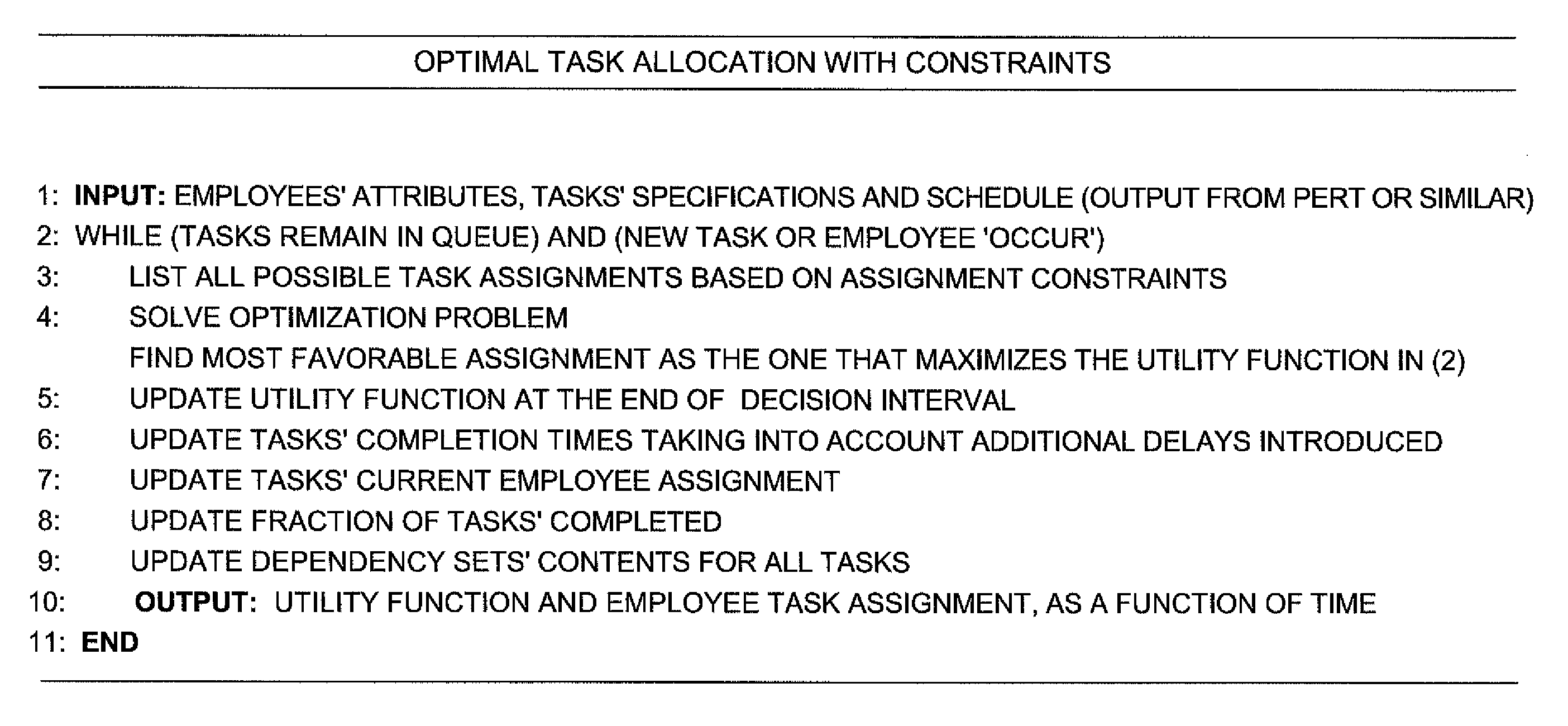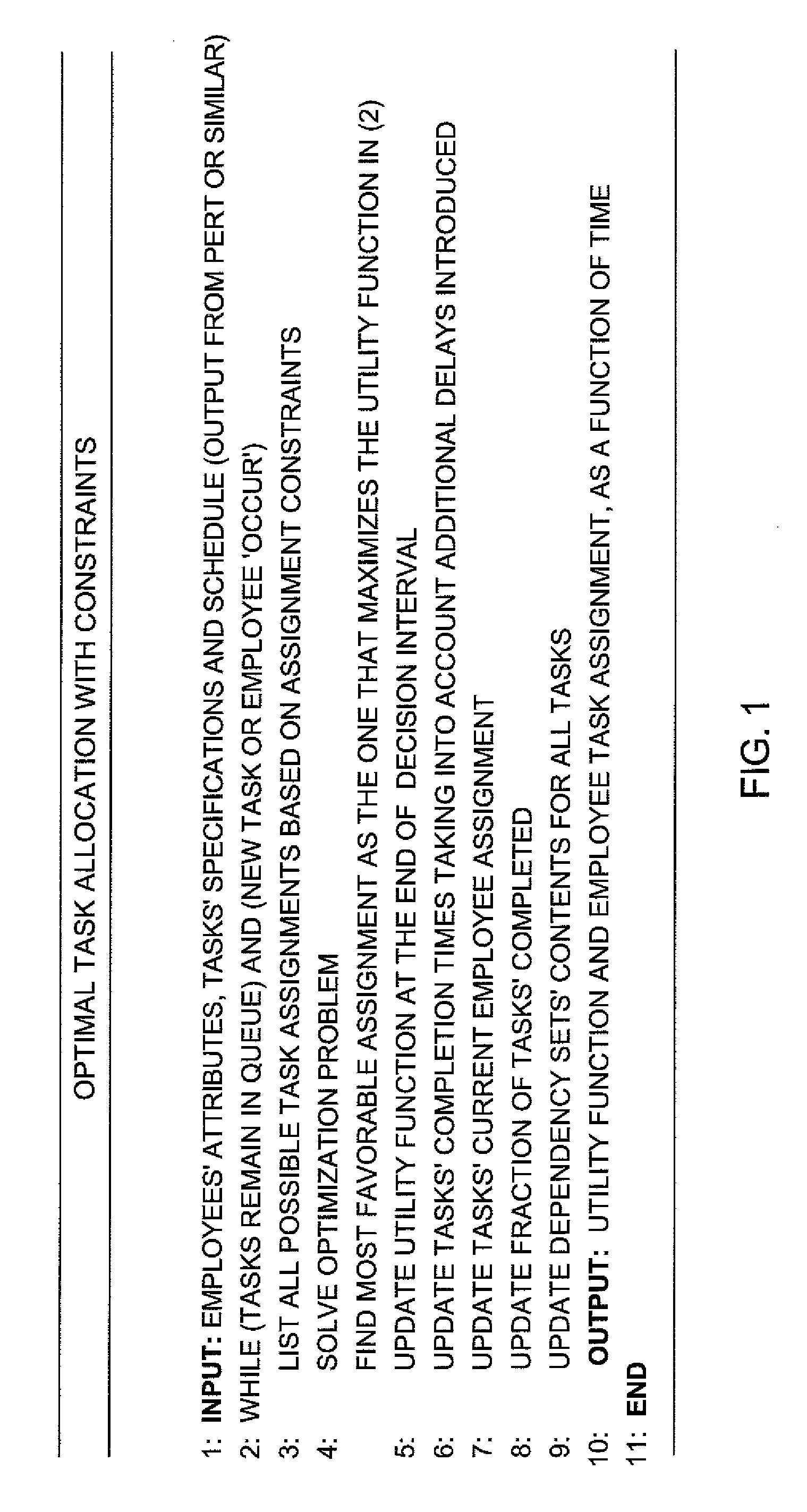Method and system for allocating dependent tasks to teams through multi-variate optimization
a technology of multi-variate optimization and task allocation, applied in the field of can solve problems such as similar scope and difficulty, require more advanced scheduling algorithms, and complex problems, and achieve the effect of improving the procedure for allocating tasks to teams
- Summary
- Abstract
- Description
- Claims
- Application Information
AI Technical Summary
Benefits of technology
Problems solved by technology
Method used
Image
Examples
Embodiment Construction
[0024]The present invention, generally, provides a method, system and article of manufacture for allocating tasks to a team of persons. The method comprises the step of identifying a set of tasks and a set of persons, each of the tasks having a given set of task attributes, and each of the persons having a given set of employee attributes. The method comprises the further steps of establishing a cost function including a set of cost factors based on one or more of the task or employee attributes, and establishing a utility function including a set of utility factors based on one or more of the task or employee attributes. One or more assignments of the tasks among the employees are found that minimizes the cost function; and the one assignment, of said one or more assignments, is identified that maximizes the utility function.
[0025]The preferred embodiment of the invention is based on the principle that both tasks and resources are fungible, and this embodiment of the invention uses...
PUM
 Login to View More
Login to View More Abstract
Description
Claims
Application Information
 Login to View More
Login to View More - R&D
- Intellectual Property
- Life Sciences
- Materials
- Tech Scout
- Unparalleled Data Quality
- Higher Quality Content
- 60% Fewer Hallucinations
Browse by: Latest US Patents, China's latest patents, Technical Efficacy Thesaurus, Application Domain, Technology Topic, Popular Technical Reports.
© 2025 PatSnap. All rights reserved.Legal|Privacy policy|Modern Slavery Act Transparency Statement|Sitemap|About US| Contact US: help@patsnap.com



